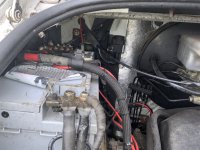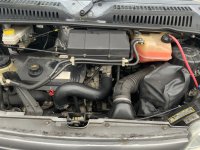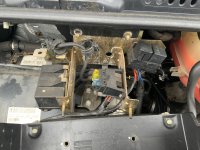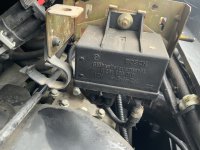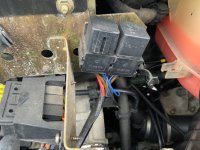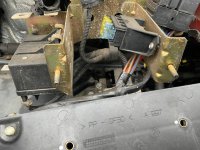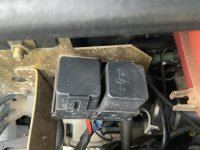As the title says I am about to get very confused.
I have a Fiat Ducato 15 JTD MWB 2003 with a 2286Cc diesal engine.
In fact it is known as a fiat ducato Sundance 600B motorhome.
However the motorhome part is a totally separate part it’s the fact that the Fiat part drags the motorhome part
Anyway after a very very long list of repairs ect to both parts I have now decided to change the motorhome part to lithium batteries ..
Anyway I am having a drawing made up of whet goes where and what parts are needed .
Now the problem. I was asked. Where the split charge relay was.
Me I have no idea .
So pushed along to a local garage he asked why si I made a mistake in telling him what I was about to do .
Now he won’t tell me where the split charge relay is as he said he will deal with it when he gets the work of the lithium system.
Not going to happen as I have always done as much as I can.
So I was told it was under the bonnet next to the starter batter but as there is only one there it’s not there .
Where should I be looking now.
The below image is the starter battery
I have a Fiat Ducato 15 JTD MWB 2003 with a 2286Cc diesal engine.
In fact it is known as a fiat ducato Sundance 600B motorhome.
However the motorhome part is a totally separate part it’s the fact that the Fiat part drags the motorhome part
Anyway after a very very long list of repairs ect to both parts I have now decided to change the motorhome part to lithium batteries ..
Anyway I am having a drawing made up of whet goes where and what parts are needed .
Now the problem. I was asked. Where the split charge relay was.
Me I have no idea .
So pushed along to a local garage he asked why si I made a mistake in telling him what I was about to do .
Now he won’t tell me where the split charge relay is as he said he will deal with it when he gets the work of the lithium system.
Not going to happen as I have always done as much as I can.
So I was told it was under the bonnet next to the starter batter but as there is only one there it’s not there .
Where should I be looking now.
The below image is the starter battery


